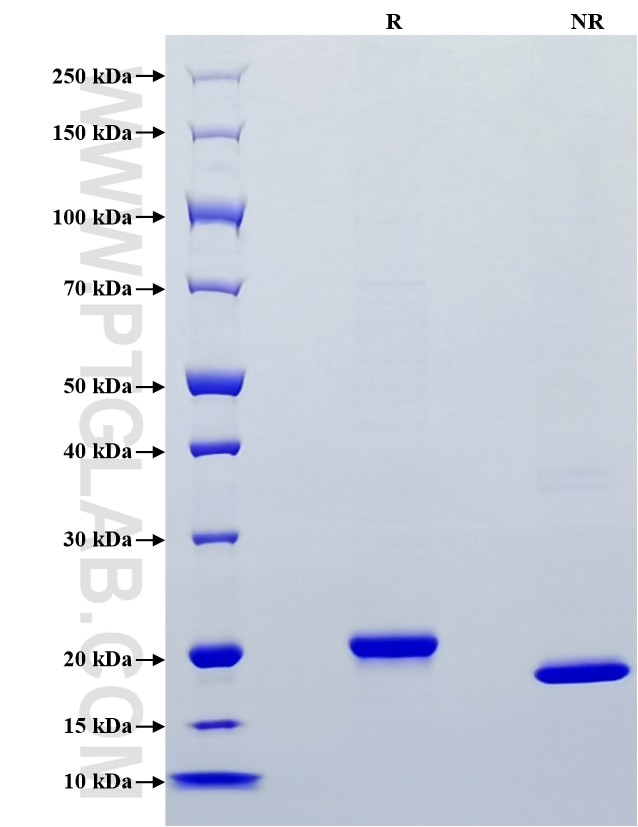Recombinant Mouse RBP4 protein (His Tag)
Species
Mouse
Purity
>90 %, SDS-PAGE
Tag
His Tag
Activity
not tested
Cat no : Eg1140
Validation Data Gallery
Product Information
| Purity | >90 %, SDS-PAGE |
| Endotoxin | <1.0 EU/μg protein, LAL method |
| Activity |
Not tested |
| Expression | HEK293-derived Mouse RBP4 protein Glu19-Leu201 (Accession# Q00724) with a His tag at the C-terminus. |
| GeneID | 19662 |
| Accession | Q00724 |
| PredictedSize | 22.5 kDa |
| SDS-PAGE | |
| Formulation | Lyophilized from 0.22 μm filtered solution in PBS, pH 7.4. Normally 5% trehalose and 5% mannitol are added as protectants before lyophilization. |
| Reconstitution | Briefly centrifuge the tube before opening. Reconstitute at 0.1-0.5 mg/mL in sterile water. |
| Storage Conditions |
It is recommended that the protein be aliquoted for optimal storage. Avoid repeated freeze-thaw cycles.
|
| Shipping | The product is shipped at ambient temperature. Upon receipt, store it immediately at the recommended temperature. |
Background
RBP4 (retinol-binding protein 4) is a carrier protein that transports vitamin A (retinol) from the liver to the peripheral tissues. Synthesized primarily by hepatocytes and adipocytes as a 21 kDa non-glycosylated protein, RBP4 is secreted into the circulation as a retinol-RBP4 complex. In plasma the RBP4-retinol complex is bound to transthyretin (TRR), which prevents kidney filtration. Two truncated forms of RBP4, RBP4-L (truncated at Leu-183) and RBP4-LL (truncated at Leu-182 and Leu-183), exist by proteolytic process. RBP4-L and RBP4-LL, which do not bind TTR, are normally excreted into the urine but accumulate in the serum during renal failure. Urinary RBP4 has been reported as marker for glomerular disease. RBP4 also was identified as an adipokine that elevated in some INS-resistant states. Measurement of serum RBP4 could be used to assess the risk of INS resistance, type 2 diabetes, obesity, and cardiovascular disease.
References:
1. Alapatt, Philomena et al. The Journal of biological chemistry vol. 288,2 (2013): 1250-65. 2. Amengual, Jaume et al. The Journal of biological chemistry vol. 287,29 (2012): 24216-27. 3. Batten, Matthew L et al. The Journal of biological chemistry vol. 279,11 (2004): 10422-32. 4. Frey, Simone K et al. Lipids in health and disease vol. 7 29. 27 Aug. 2008.

